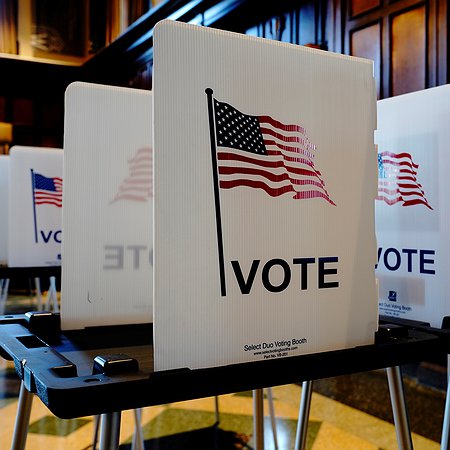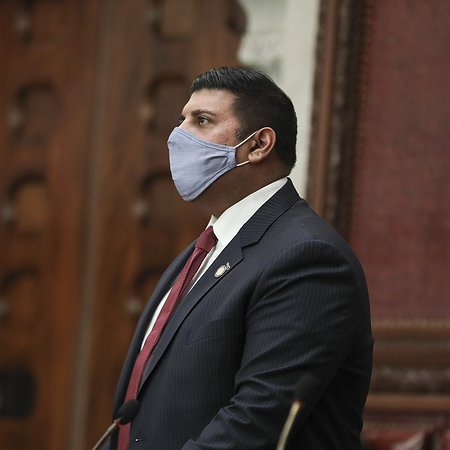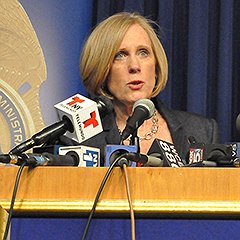Media Fails to Recognize Role in Undermining Support for Bail Reform
A recent op-ed and editorial underscore the media’s role in creating a gap in the public’s perception and the reality of New York’s bail reform laws.
The Briefing

A recent op-ed and editorial underscore the media’s role in creating a gap in the public’s perception and the reality of New York’s bail reform laws.
Politicians and media outlets believe something needs to be done about bail reform because it is unpopular among New Yorkers, but fail to recognize their misinformation and lies undermined public support for a successful policy.
Bail reform is not tied to crime and everyone knows it
The media knows that bail reform and increases in crime are not related. In their respective articles, Fred LeBrun at the Times-Union and the editorial board at Newsday admit this, but are unwilling to extend the logic a step further and state their support for a policy that is working.
Lebrun writes that crime and bail reform “have become linked, fairly or not,” citing polling data indicating the public perceives crime to be a problem in New York. The Newsday editorial board concerns itself with public perceptions of crime and safety as well, arguing that lawmakers in Albany must be attentive to voters who “express public safety concerns at the polls.”
Both pieces acknowledge that bail reform has nothing to do with crime and that the issue is a matter of perception. The Newsday editorial reads, “Although crime is largely driven by long-term national trends, it won't do for the Assembly and Senate majorities to simply ignore critics.”
The lack of self-reflection is astounding. The editorial board is admitting that it knows bail reform has nothing to do with increases in crime. The data could not be more clear – bail reform is not connected to any increase in crime. Still, Newsday advocates for Hochul’s regressive proposals because “the people have reason to worry” without acknowledging that many New Yorkers disfavor bail reform in part because media outlets routinely mislead and lie to them about the impact of the policy.
But it is the combination of copaganda and misleading media coverage, often from columnists like LeBrun and editorial boards like Newsday’s, that has undermined support for bail reform and led many New Yorkers to believe that bail reform is connected to tragic instances of harm. Media coverage of bail reform has outpaced the increases in crime in New York City, and coverage of bail reform in the media spikes leading up to elections and rollbacks. That cycle is repeating itself now, as the Newsday and Times-Union articles attempt to create public support for rollbacks that undermine the intention of the original bail reform law.
Bail reform in New York is a massive success. It upholds public safety and is not connected to any increases in crime, while protecting freedom and promoting fiscal responsibility.
Hochul’s proposal will harm thousands of people
LeBrun proceeds to cite an estimate from an earlier Times-Union article that a “couple of thousand” people will be jailed if Hochul’s proposal to remove the least restrictive means standard is approved. He does not state that the policy will reduce crime; in fact, he cites a Hochul administration statement that says the policy “will not automatically bring down crime.” Instead, LeBrun writes “this will not go unnoticed by the media, and hence the public.”
LeBrun’s claim points to his cynical support of Hochul’s proposal. In LeBrun’s view, the only reason to do something about bail reform is to show the media and public that you are doing something about bail reform. The change will result in a few thousand people subjected to crimogenic, dehumanizing and deadly pretrial jailing conditions and will not affect crime rates. But at least the media will have “ocular proof” that something was done.
Hochul is playing politics with people’s lives
Hochul’s proposal is about politics and optics. Judges do not need more discretion nor do they need Hochul to do away with the only standard that exists when making bail decisions. New Yorkers believe bail reform is connected to crime and judges do not have enough discretion because politicians and media outlets mislead and lie to them. Yet, instead of responsibly educating the public, Hochul and her supporters in the media are using the public’s misunderstanding to advocate for a rollback to a successful policy.
Opponents of bail reform are still fighting for changes to the law after two sets of rollbacks. Another rollback will not change their mind. Politicians win when they stand behind a wildly successful public policy that keeps us safe and against misinformation campaigns from people who want to see more of the most vulnerable people in our society in jail.
The Newsday editorial encourages Hochul and lawmakers to “to tilt against crime.” The framing implies that the only way to prevent crime is to put more people in jail. We know jail is not an effective public safety measure. But Hochul’s “tilt” angles Democrats closer to Republicans on crime, a battle Democrats have fought and lost time and again.
To “tilt against crime,” Hochul and lawmakers should focus on real solutions: access to affordable housing, a living wage, health care, re-entry services and community-based violence intervention programs.








